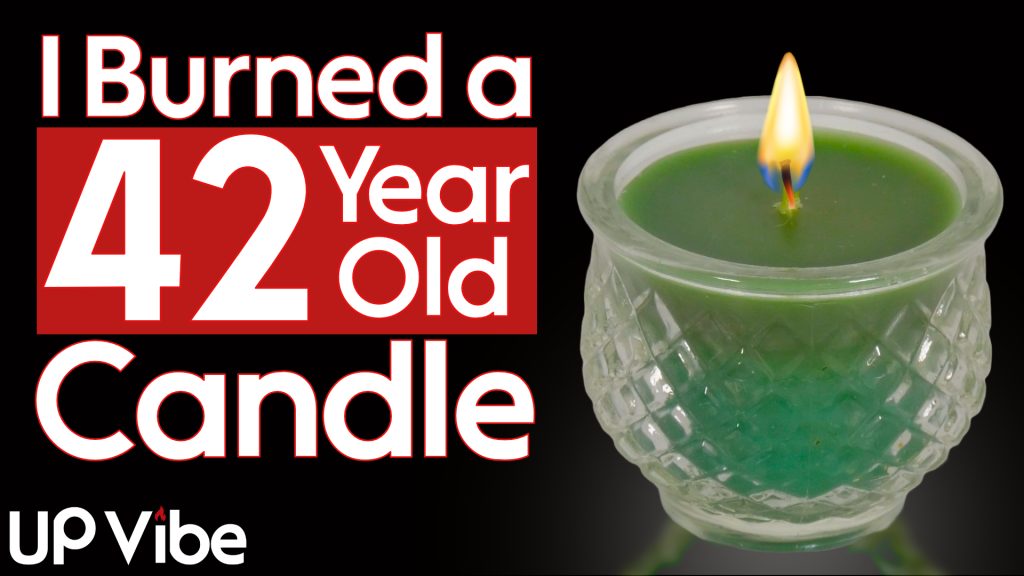
I Burned a Candle from 1982: You Won’t Believe What Happened
 Inside this box lies a piece of the past—a candle from 1982 that has waited over four decades to fulfill its fiery destiny.
Inside this box lies a piece of the past—a candle from 1982 that has waited over four decades to fulfill its fiery destiny.
Let’s unbox it, explore its presentation, test the cold throw, light it, and find out how it burns and smells after surviving 42 years of history, including disco, Y2K, and the bold fashion choices of the ‘80s.
Hi, I’m Jai Catalano, and I couldn’t resist purchasing this unopened, unburned antique candle to see what secrets it holds after all this time. Is it still a fragrant gem, or has time transformed it into something… less appealing?
But before we strike a match, let’s rewind to the 1900s (wow, that sounds ancient!) and explore how candles were presented back then.
We’ll break it down:
- The box (Design & Branding)
- The candle care card or safety instructions (if any)
- The candle jar presentation
- The cold throw
Then, we’ll light it, let it burn until it extinguishes itself, and evaluate the hot throw and overall burn quality.
Ready to take this journey back in time? Let’s go!
Lighting the Candle: First Impressions
When I struck the match and lit the wick, there was a tiny poof sound—probably the wax and wick waking up after their 42-year slumber. At first, the flame was steady, and there was a faint whiff of something… medicinal? It wasn’t the warm, inviting spice I’d hoped for. Instead, it smelled a bit like a mix of mint and dusty attic.
The cold throw (or lack thereof) didn’t leave much of an impression earlier, but now that the wax is warming up, there’s definitely a hint of frosty mint as promised on the label. However, it’s faint and mixed with a peculiar “aged wax” aroma that’s hard to describe. Imagine opening an old box of crayons—yeah, that’s the vibe.
The Burn Test: Longevity and Quality
As the candle burned, I noticed something interesting. The wax pool formed relatively quickly, but the wick started to mushroom. This isn’t uncommon for paraffin candles, especially older ones. Over time, the flame became inconsistent, flickering a lot—probably due to the age of the wick and wax.
After about an hour, the scent intensified slightly, with more of the mint aroma making an appearance. It wasn’t overpowering, but it was surprisingly pleasant given its age. However, there was also a faint smoky undertone, suggesting the wick was struggling a bit.
The Final Extinguish
After burning for around 3 hours, the candle started showing signs of exhaustion. As promised in the safety instructions, the candle had a built-in self-extinguishing feature. When it reached the bottom, the flame snuffed itself out with no drama.
The leftover residue was exactly as described in the booklet—a small disc of “special material.” I’m guessing this was an early form of safety wax designed to cut off the fuel source once the candle burned down. It worked like a charm.
Final Thoughts
Burn Quality: Considering its age, the candle burned decently. The flame wasn’t perfect, but it didn’t tunnel or sputter too much.
Scent: The minty aroma was subtle and nostalgic, though the aged wax smell was a bit distracting.
Presentation: From the retro box design to the diamond-patterned jar, it’s a piece of history that brings back memories of Christmases long past.
Would I recommend burning a 42-year-old candle? Probably not for daily use, but as a fun experiment, it’s a definite yes!
To check out the full video version of “I Burned a Candle from 1982: You Won’t Believe What Happened”, click here.



0 Comments